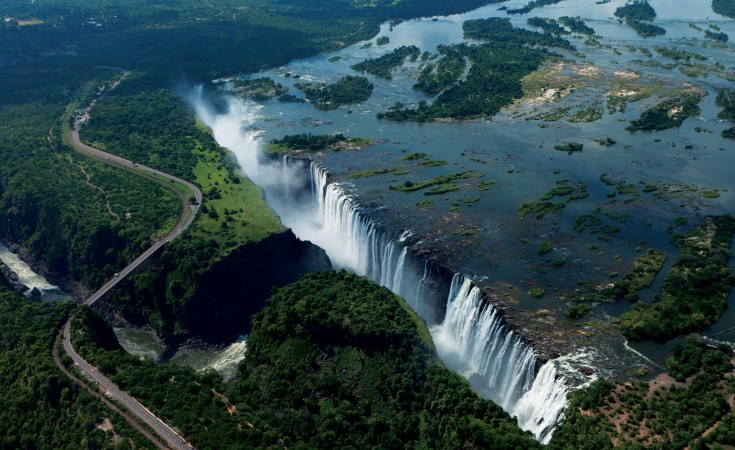In the 21st century, amidst the towering skyscrapers and bustling cities, a paradoxical reality exists in Africa – energy poverty. According to the United Nations, “Across Africa, a staggering 600 million people, roughly half the continent’s population lack access to reliable electricity despite being rich in natural resources. This energy poverty stifles economic growth, limits educational opportunities, and impedes healthcare services. However, there is hope on the horizon as bold initiatives and innovative solutions are being implemented to tackle this pervasive issue head-on. This article dives into the current status of energy poverty in Africa, examines the challenges it poses, and highlights the bold moves being made to eradicate it.
This energy poverty stifles economic growth, hinders education, and limits healthcare access. It’s a complex challenge, but with bold moves, Africa can illuminate a brighter future.
According to the World Bank, the electrification rate in Sub-Saharan Africa is only 47%, compared to the global average of 90%. This disparity translates into real-world consequences. Businesses struggle to operate after dark, limiting job creation. Children can’t study after sunset, hindering educational attainment. Hospitals lack reliable power for essential equipment, jeopardizing healthcare delivery.
The reliance on polluting fuels like kerosene for lighting has severe health and environmental impacts. The World Health Organization estimates that 4.2 million people die prematurely each year due to indoor air pollution, with Africa disproportionately affected.
Africa boasts vast renewable energy resources – from abundant sunshine and strong winds to geothermal potential. The International Renewable Energy Agency (IRENA) estimates that Africa has the potential to generate 600 times more renewable energy than it currently uses.
This presents a unique opportunity. By harnessing these resources, Africa can not only eradicate energy poverty but also become a leader in the global clean energy transition.
Eradicating energy poverty requires a multi-pronged approach. Here are some key strategies:
Investing in Mini-grids and Off-grid Solutions
“Investing in decentralized solutions like mini-grids is not just about light bulbs, it’s about unlocking the potential of millions of Africans. With reliable power, communities can thrive, businesses can flourish, and children can dream brighter dreams.” – Dr. Vera Songwe, Executive Secretary of the United Nations Economic Commission for Africa. Large, centralized grids can be expensive and time-consuming to build, especially in remote areas. Decentralized solutions like mini-grids powered by solar, wind, or hydro can provide reliable and affordable electricity to rural communities. M-Kopa, a Kenyan company, provides pay-as-you-go solar home systems to off-grid households. This innovative model has brought clean, reliable power to millions across Africa.
Leveraging Mobile Money
Mobile phone penetration rates in Africa are high. Integrating mobile money platforms with electricity payments can facilitate easier bill payments and pre-paid options, especially for those in remote areas without traditional banking access. In Rwanda, mobile money platform MTN MobileMoney allows customers to purchase prepaid electricity vouchers for off-grid solar systems.
Empowering Women as Entrepreneurs
Women play a crucial role in managing household energy needs. “Eradicating energy poverty requires more than just flipping a switch. It’s about empowering women, fostering innovation, and building a future powered by clean energy for all.” – Wanjira Mathai, Managing Director of Greenbelt Movement Africa. Investing in training programs can equip them with the skills to become solar technicians, micro-grid operators, or energy product distributors, fostering female entrepreneurship and ensuring women’s participation in the clean energy sector. The ENERGIA program by the World Bank supports women-led clean energy businesses across Africa, promoting gender equality in the energy transition.
Public-Private Partnerships
Bridging the financing gap for large-scale renewable energy projects requires collaboration between governments, development agencies, and private investors. Public-Private Partnerships (PPPs) can leverage public funds to attract private investment, accelerating renewable energy deployment. The African Renewable Energy Initiative (AREI) is a PPP led by the African Union and the African Development Bank. It aims to mobilize $100 billion by 2030 to develop and utilize Africa’s renewable energy resources.
Investing in Energy Storage
Renewable energy sources like solar and wind are intermittent. Developing efficient energy storage solutions is crucial to ensure a reliable and stable power supply. South Africa’s Redstone Concentrated Solar Power Plant incorporates molten salt thermal storage, allowing it to generate electricity for up to 10 hours after sunset.
Capacity Building and Technology Transfer
Building local capacity and transferring technology know-how are essential for sustainable energy development in Africa. Initiatives such as the African Union’s “Africa Renewable Energy Initiative” aim to train local technicians, engineers, and entrepreneurs in renewable energy technologies and promote technology transfer partnerships with developed countries.
Eradicating energy poverty goes beyond simply providing electricity. Ensuring affordability and access to clean cooking solutions is equally important.
Millions of households in Africa rely on traditional biomass burning for cooking, leading to respiratory illnesses and deforestation. Promoting cleaner, more efficient cookstoves can save lives and protect the environment.
Eradicating energy poverty in Africa is a monumental challenge, but the continent holds the resources and determination to achieve it. By embracing bold solutions, investing in renewable energy, and empowering local communities, Africa can turn the lights on, illuminate a brighter future, and become a global leader in the clean energy revolution.


